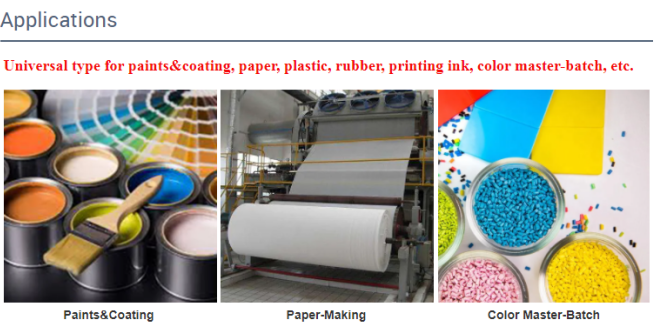
Aug . 12, 2024 16:16 Back to list
Exploring the Uses and Benefits of Lithopone as a Versatile White Pigment in Various Industries
Lithopone The Versatile White Pigment
Lithopone is an intriguing white pigment that has been utilized in various industries due to its unique properties and benefits. Composed primarily of a mixture of zinc sulfide (ZnS) and barium sulfate (BaSO4), lithopone was first developed in the early 20th century and quickly gained popularity, particularly as a substitute for lead-based pigments.
One of the significant advantages of lithopone is its non-toxic nature. In an era when the dangers of lead and other harmful substances in pigments were becoming increasingly recognized, lithopone emerged as a safer alternative. This characteristic made it an essential material for manufacturers looking to adhere to the burgeoning safety regulations. Lithopone has been used extensively in paints, coatings, plastics, and even cosmetics, making it a versatile option for many applications.
Lithopone The Versatile White Pigment
The use of lithopone in plastics has also gained traction over the years. As the demand for non-toxic, environmentally friendly materials increases, lithopone has emerged as a preferred choice due to its stability and purity. Lithopone helps in improving the opacity of plastic materials while ensuring that they remain lightweight and flexible. Furthermore, it does not significantly affect the processing characteristics of the plastics, making it easier to incorporate into various manufacturing processes.
lithopone white pigment

In addition to its applications in paints and plastics, lithopone is also a popular choice in the paper industry. When added to paper products, lithopone improves brightness and opacity, resulting in superior print quality. Its non-toxic nature aligns well with the growing demand for eco-friendly products, appealing to both manufacturers and consumers seeking sustainable options.
The production of lithopone involves a process known as the double decomposition method, where zinc sulfate and barium sulfide react in an aqueous solution. This method allows for a high degree of control over the properties of the final product, ensuring that the lithopone produced meets the required specifications for various applications.
Despite its many advantages, lithopone is not without limitations. For instance, it can have lower tinting strength compared to other whitening agents, such as titanium dioxide. Additionally, under certain conditions, lithopone can be less resistant to heat and may degrade when exposed to strong acids. As a result, manufacturers must carefully consider these factors when formulating products that utilize lithopone.
In conclusion, lithopone is a versatile white pigment with numerous applications across different industries. Its non-toxic nature makes it a safer alternative to traditional pigments, while its excellent hiding power and brightness can enhance the quality of various products. As industries continue to prioritize safety and sustainability, lithopone's relevance is likely to persist, offering a reliable solution for manufacturers seeking effective, environmentally friendly materials. Whether in paints, plastics, or paper, lithopone's unique properties ensure that it remains a crucial player in the realm of white pigments.
-
Premium 6618 Titanium Dioxide for GPT-4 Turbo Applications
NewsJul.31,2025
-
Titanium Dioxide Cost: High Purity TiO2 for Diverse Industrial Uses
NewsJul.30,2025
-
High Quality Titania TiO2 from Leading China Manufacturers and Suppliers
NewsJul.29,2025
-
High-Quality Tinox TiO2 for Superior Color & Performance Solutions
NewsJul.29,2025
-
High Quality Titania TiO2 from Leading China Supplier & Manufacturer
NewsJul.29,2025
-
High-Performance r6618 TiO2 for Superior Whitening and Versatility
NewsJul.28,2025
